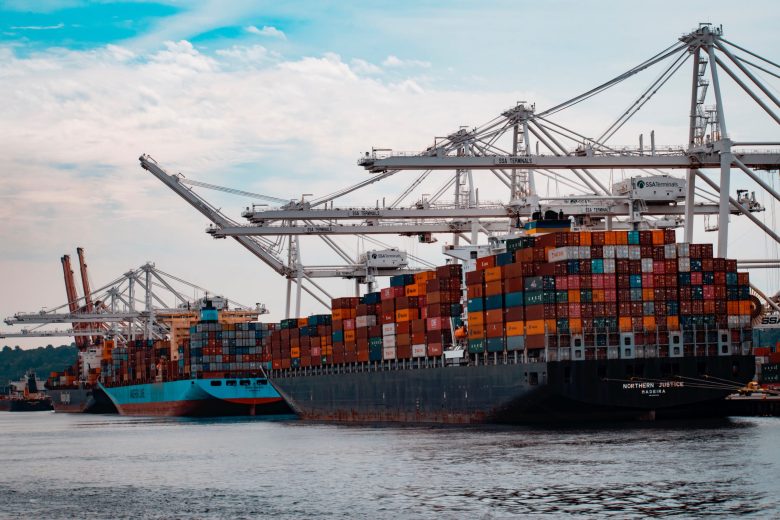
The Australian Competition and Consumer Commission (ACCC) has examined the prices, costs, and profits of stevedores at Australia’s international container ports, and has also looked more broadly at the state of the container freight supply chain following the pandemic disruption of recent years.
The competition regulator and national consumer law champion issued its Container Stevedoring Monitoring Report 2021-22 report late last year, which found that the operating profit margin of Australia’s container stevedoring industry has increased by 14 percentage points since the start of the COVID-19 pandemic.
It said this is the highest level observed since the Patrick and DP World duopoly ended about a decade ago and shows that the industry operating profit margin of Australia’s five stevedores was 24 per cent in 2021-22, up from 10 per cent in 2019-20.
Between 2000 and 2013, Patrick and DP World (Sydney, Melbourne, Fremantle and Brisbane), and the Adelaide container terminal collectively achieved operating profits of between 21 and 27 per cent; however, competition from Hutchison and VICT combined with large infrastructure investments and other developments led to their margins declining over the following seven years.
“Importers and exporters benefited from an injection of new competition at our largest ports several years ago, but we’re concerned that in the past few years those gains have been eroded to the detriment of importers and exporters, and, ultimately, Australian consumers,” ACCC commissioner Anna Brakey said.
The ACCC said it has not yet formed a conclusive view on the drivers behind the recent increases in stevedores’ operating profits but added that severely constrained global shipping capacity throughout the pandemic made it harder for importers and exporters to change to a different shipping service, and by implication a different stevedore, which may have weakened price competition between stevedores.
“If stevedores’ higher profits are due to the recent shocks to the global container freight supply chain, we’d expect their profits to decline over time as shipping and terminal congestion eases,” Brakey said.
“We’ll be closely scrutinising the stevedores’ charges and financial performance in the coming years to see if there are any structural or behavioural factors sustaining higher profits, and whether any further policy or regulatory responses are warranted.”
State of container freight supply chain
The report identified that COVID-19 continued to cause significant congestion and delays in the container freight supply chain in the 2021-22 financial year, although global shipping schedule reliability has improved in the second half of this year.
ACCC said a stevedore mentioned that as few as 10 per cent of ships arrived within two hours of their designated berthing window in 2021-22, but that figure had improved to between 30 to 40 per cent in recent months.
“Ongoing congestion in global supply chains means it’s still harder to move containers than it was pre-pandemic, but the situation has improved considerably this year,” Brakey said.
The ACCC has also heard that unreliable shipping schedules have caused ‘vessel bunching’ at Australian ports, resulting in large peaks and troughs for stevedores’ container handling.
Between 2019-20 and 2021-22, the net ship rate, which is a measure of the number of containers moved on or off a ship in an hour, at Australia’s container ports fell by 18 per cent, at least partly due to vessel bunching.
“Less reliable shipping schedules, an increase in the size of ships visiting our container ports, and labour shortages across the whole supply chain have all impacted the efficiency of stevedores’ operations,” Brakey added.
Freight rates fall
The ACCC also found that the recent slowdown in global trade has put downward pressure on global freight spot rates, which in November this year fell below US$2,000 per 40-foot container according to the Platts Container Index produced by S&P Global Commodity Insights. However, it said this is still roughly double the average rate in 2019.
“Global freight spot rates peaked in September 2021 at nearly US$8,000 but fell to about US$5,000 by the end of June 2022,” Brakey said.
“Elevated freight rates and generally higher costs for importers to use the supply chain have contributed to higher prices for Australian consumers and have put upward pressure on inflation.
“There is currently a high degree of economic uncertainty globally, but if there’s a reduction in global trade next year as industry analysts are predicting, it should ease pressure on supply chains and freight rates even further.”
Reforms are needed
The ACCC said the regulation of Australia’s monopoly container ports is ineffective, and the threat of further regulation in most states is not sufficiently credible, adding that there is currently the potential for the exercise of market power to exist undetected due to the inadequate level of regulatory scrutiny.
The report says that, at a minimum, Australia’s privatised container ports (Brisbane, Sydney, Melbourne, Adelaide) should be subject to greater regulatory oversight.
The report also says that cargo owners in Australia need more protection against unreasonable detention fee practices, after the ACCC heard that some cargo owners paid significantly higher detention fees in 2021-22. Shipping lines charge detention fees to cargo owners for continuing to use containers beyond an agreed period, to incentivise their prompt return.
Cargo owners said that some shipping lines had levied detention fees on them for failing to return empty containers on time, even though the locations the shipping lines had directed the containers be returned to were full.
The ACCC added that it supports the recommendations in the Productivity Commission’s recent draft report on Australia’s container ports to repeal Part X of the Competition and Consumer Act to encourage greater competition between shipping companies on Australian trade routes, address industrial relations issues, and develop benchmarks to measure the productivity of Australia’s container ports.
“Container shipping is critical to a trade-exposed economy like Australia. A well-functioning and more efficient supply chain would benefit all Australian businesses and consumers,” Brakey said.
Comment below to have your say on this story.
If you have a news story or tip-off, get in touch at editorial@sprinter.com.au.
Sign up to the Sprinter newsletter
